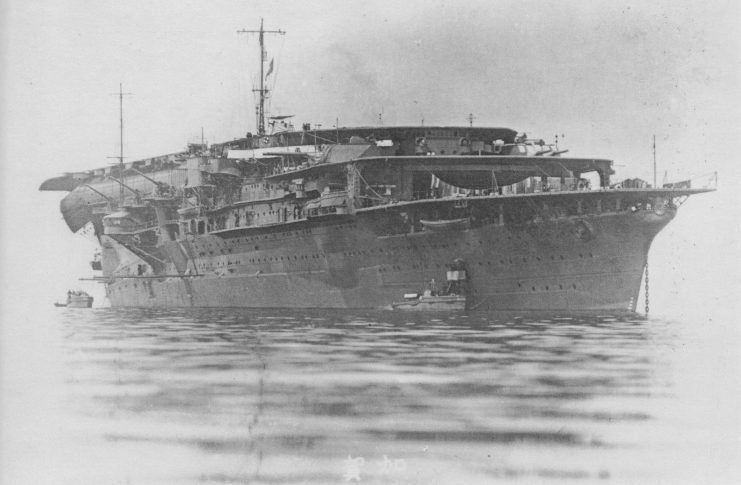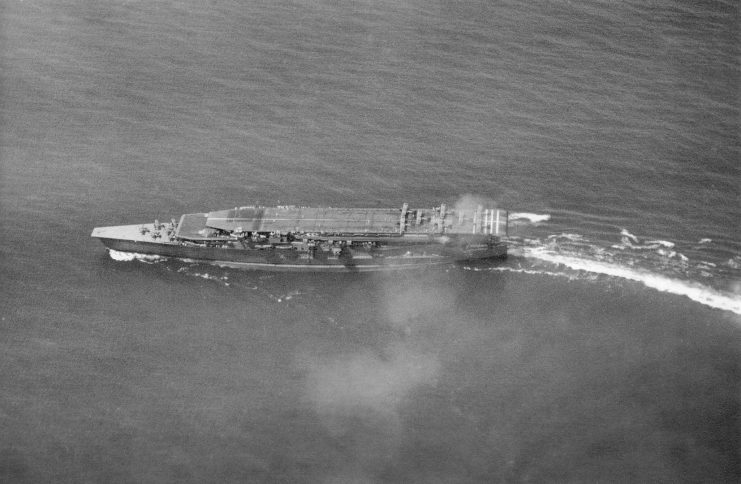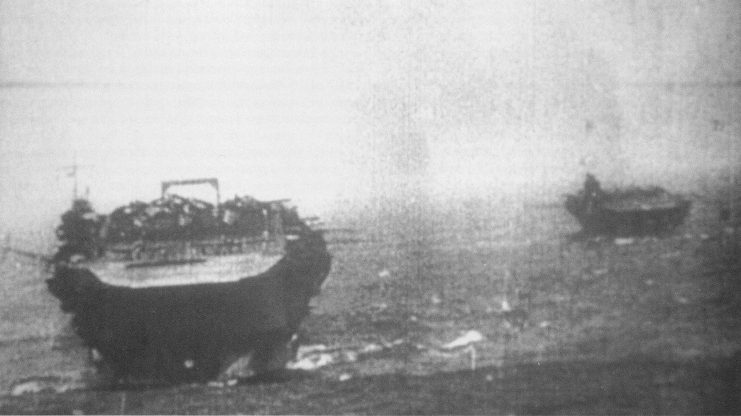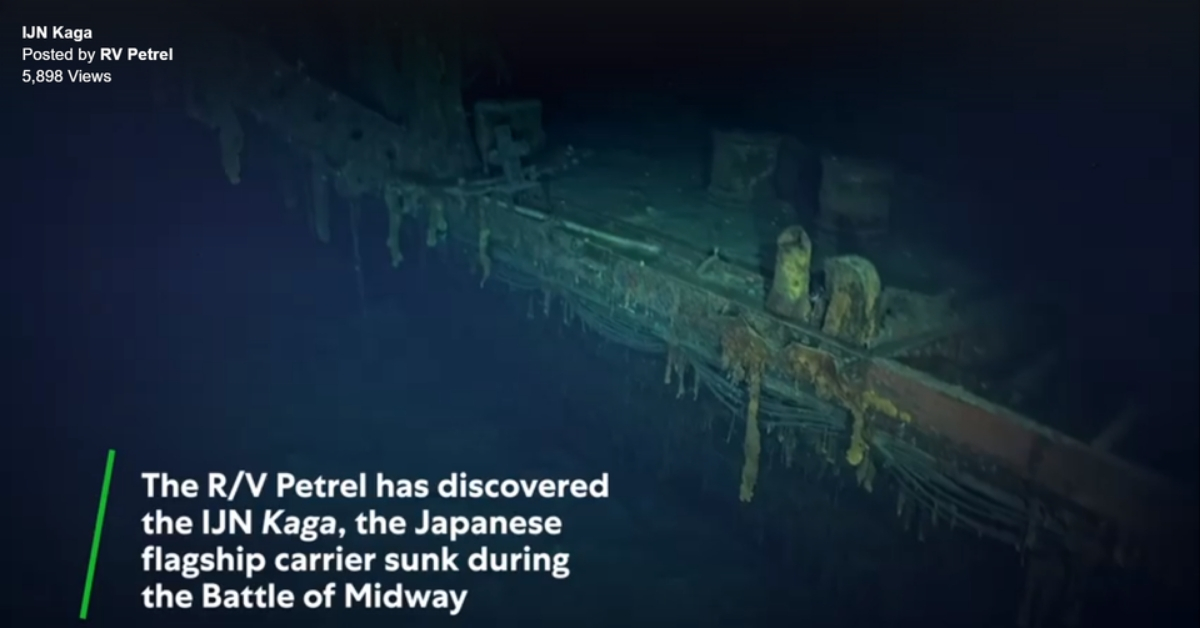Seattle, WA, Oct. 18, 2019 – During extensive underwater surveying of the Battle of Midway site, the Research Vessel (R/V) Petrel, owned and operated by Vulcan Inc., discovered long lost wreckage from the battle.
On October 16, R/V Petrel’s crew was able to identify the ship remains as those of the Japanese fleet aircraft carrier IJN Kaga.
The 1942 Battle of Midway was a decisive naval battle during World War II that occurred six months after Japan’s attack on Pearl Harbor.
Scroll Down for Video
The crew aboard R/V Petrel spent several weeks surveying the massive area, documenting more than 500 square nautical miles, all within the Papahanaumokuakea Marine National Monument.
The wreckage of Kaga was found 5,400 meters (more than 17,000 feet) below the surface.

“This project is significantly different from previous missions as it required a level of investigation, analysis and survey of a carrier-based engagement initially separated by over 150nm, a total area covering thousands of square nautical miles,” said Robert Kraft, director of subsea operations for Vulcan Inc.
“It was a major carrier-to-carrier battle that left its eerie evidence strewn for thousands of miles across the ocean floor. With each piece of debris and each ship we discover and identify, our intent is to honor history and those who served and paid the ultimate sacrifice for their countries.”
Following the attack on Pearl Harbor, the Imperial Japanese Navy hoped another defeat would destroy the U.S. Pacific Fleet. Japanese Admiral Isoroku Yamamoto planned to invade Midway, luring American aircraft carriers into an ambush.
Midway was selected for its strategic position in the Central Pacific, providing a forward operating base for Japan if they succeeded.

Thanks, in part, to major advances in code breaking, U.S. cryptographers were able to determine the date and location of the planned attack, allowing the forewarned U.S. Navy to prepare its own ambush.
Pacific Fleet commander Admiral Chester W. Nimitz placed U.S. carriers in position to surprise the Japanese fleet as they approached Midway Island.
From June 4 – 7, 1942, the U.S. Navy battled an attacking Japanese Navy fleet near Midway, inflicting devastating damage on the Japanese fleet and ultimately winning the battle.

“The Battle of Midway was an American intelligence breakthrough,” said Frank Thompson, curator from the Naval History and Heritage Command.
“The team that deciphered the Japanese fleet codes enabled Pacific Fleet commander Nimitz to understand Japanese intentions and plan accordingly. This was a true turning point in the war for the U.S. Navy.”
Four Japanese and three American aircraft carriers participated in the battle. The four Japanese fleet carriers — Kaga, Akagi, Sōryū and Hiryū, part of the six-carrier force that had attacked Pearl Harbor six months earlier — were all sunk, as was the heavy Japanese cruiser Mikuma.
The U.S. lost carrier Yorktown and destroyer Hammann. American losses totaled at 145 aircraft and more than three hundred seamen.
Rear Adm. Brian P Fort, commander, Naval Forces Japan, said in a statement, “On the occasion of the discovery of the Kaga, we send our thoughts and prayers to our trusted and valued friends in Japan.
The terrible price of war in the Pacific was felt by all our navies. From that painful lesson, we have become the closest of allies and friends committed to maintaining a free and open Indo-Pacific.”
The crew aboard R/V Petrel has discovered more than 30 sunken warships including USS Hornet, USS Wasp, USS Juneau, USS Ward, USS Lexington, USS Helena and perhaps most famously, USS Indianapolis over the past few years.
Another Article From Us: NTSB Releases Preliminary Report on B17 Crash
Additional past Vulcan-led expeditions have resulted in the discovery of USS Astoria, Japanese battleship Musashi and Italian WWII destroyer Artigliere.
